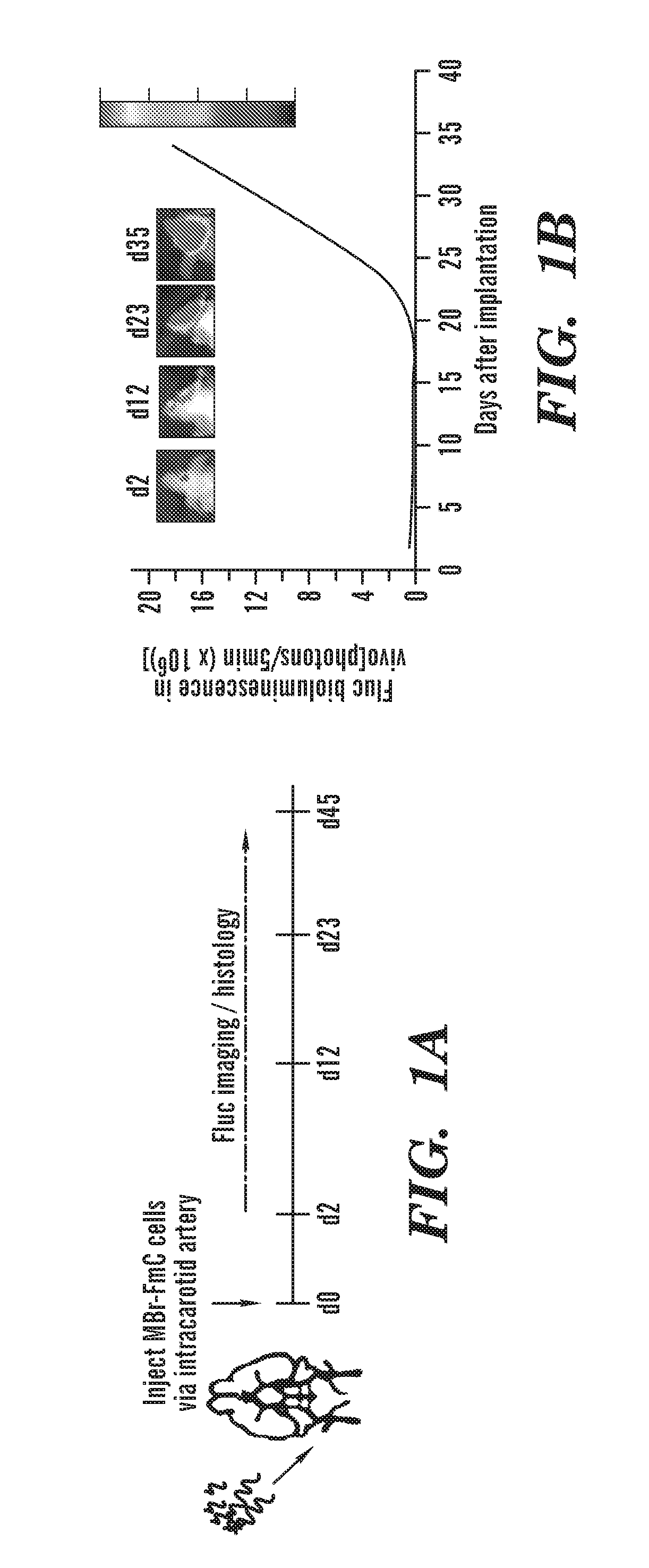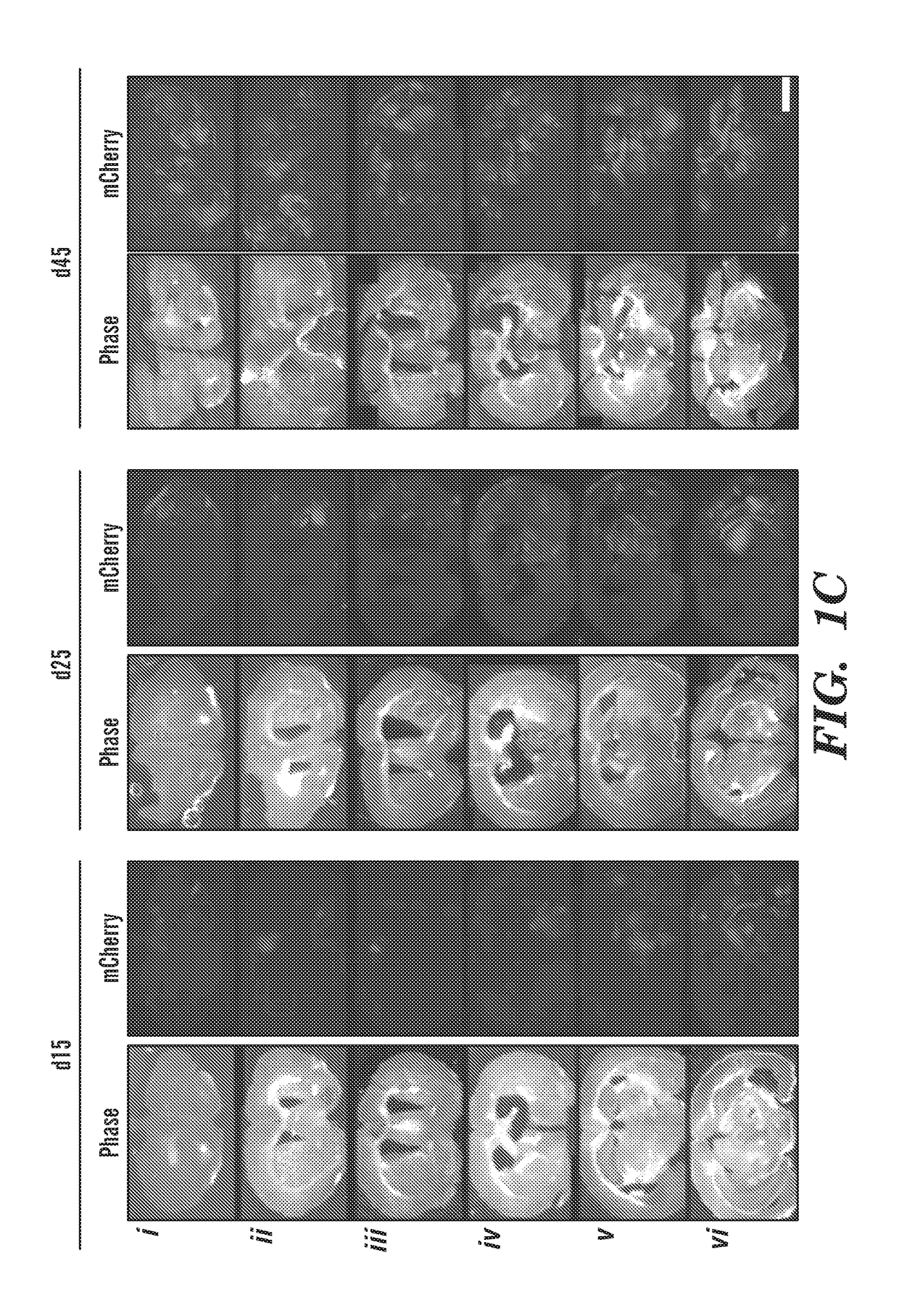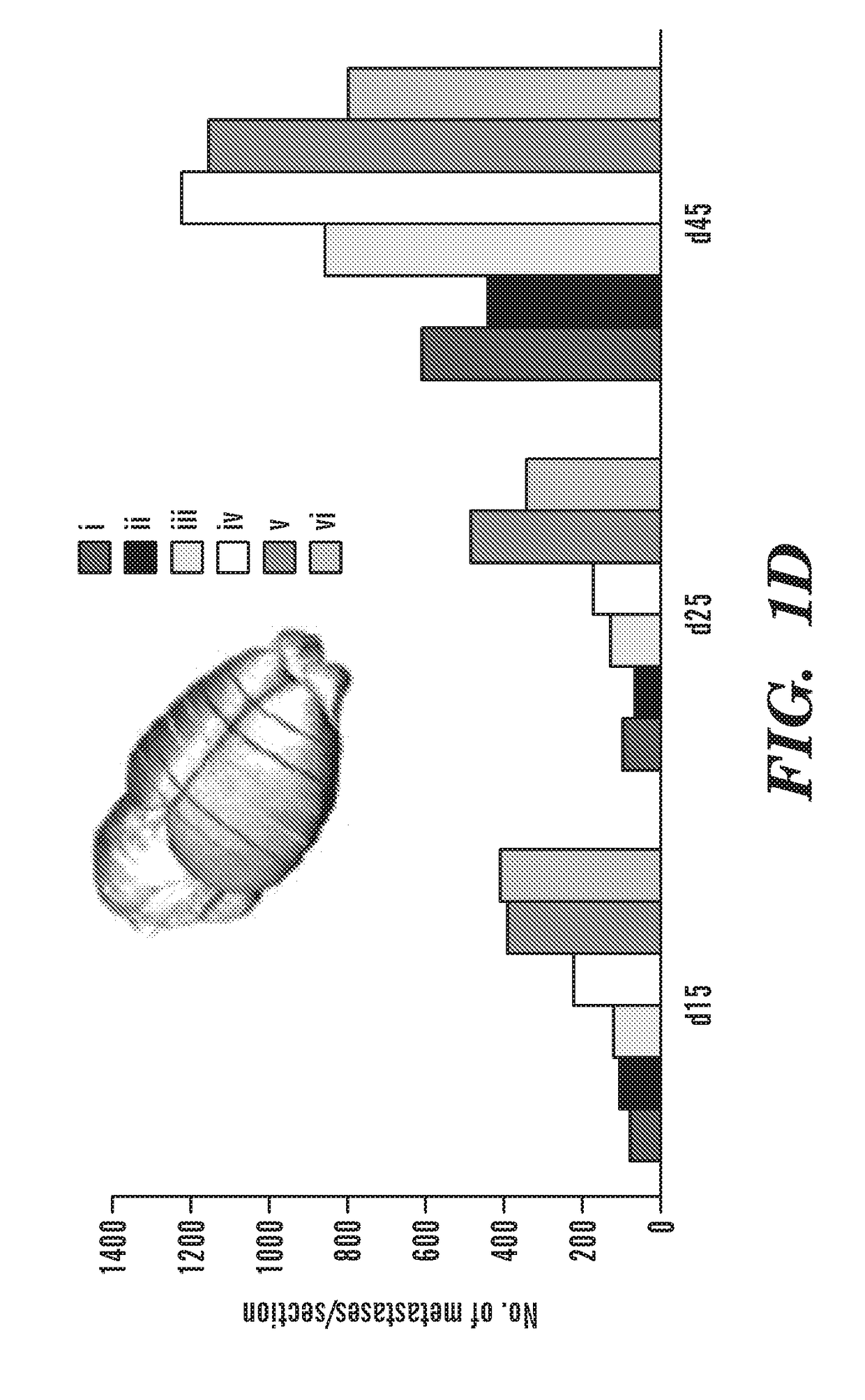Agents, systems and methods for treating cancer
- Summary
- Abstract
- Description
- Claims
- Application Information
AI Technical Summary
Benefits of technology
Problems solved by technology
Method used
Image
Examples
examples
[0322]Characterizing clinically relevant brain metastasis models and assessing the therapeutic efficacy in such models are fundamental for the development of novel therapies for metastatic brain cancers. As described herein, an in vivo imageable breast-to-brain metastasis mouse model has been developed. Using real time in vivo imaging and subsequent composite fluorescence imaging, a widespread distribution of micro- and macro-metastasis at different stages of metastatic progression is shown. It is also shown that extravasation of tumor cells and the close association of tumor cells with blood vessels in the brain mimics the multi-foci metastases observed in the clinics. The ability of engineered adult stem cells to track metastatic deposits in this model was explored, and it is shown that engineered stem cells either implanted or injected via circulation efficiently home to metastatic tumor deposits in the brain. It was tested whether TNF receptor superfamily member 10A / 10B apoptosi...
example 2
[0381]Metastatic brain tumors are the most commonly observed intracranial tumors1-4. Patients with advanced breast cancer have a high propensity to metastasize to the brain5,6 with EGFR positive and triple-negative breast cancer (TNBC) subtypes showing the highest incidence of brain metastases7. Most patients have multiple metastatic lesions at the time of diagnosis making surgery an inadequate therapeutic option on its own8. Furthermore, the tight blood brain barrier (BBB) preventing the brain permeability of systemic therapies and the non-leaky vasculature of most metastatic lesions in the brain pose challenges for the success of existing therapies and result in failure to improve overall patient survival9. Therefore to effectively treat multiple highly aggressive breast metastatic foci in the brain, there is an urgent need to develop tumor specific agents that simultaneously target aberrant signaling pathways in TNBC and utilize delivery vehicles which specifically seek metastati...
PUM
| Property | Measurement | Unit |
|---|---|---|
| Solubility (mass) | aaaaa | aaaaa |
| Surface | aaaaa | aaaaa |
Abstract
Description
Claims
Application Information
 Login to View More
Login to View More - R&D
- Intellectual Property
- Life Sciences
- Materials
- Tech Scout
- Unparalleled Data Quality
- Higher Quality Content
- 60% Fewer Hallucinations
Browse by: Latest US Patents, China's latest patents, Technical Efficacy Thesaurus, Application Domain, Technology Topic, Popular Technical Reports.
© 2025 PatSnap. All rights reserved.Legal|Privacy policy|Modern Slavery Act Transparency Statement|Sitemap|About US| Contact US: help@patsnap.com



